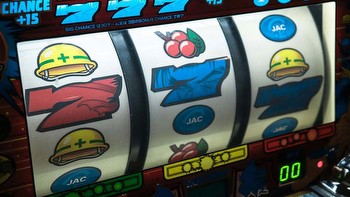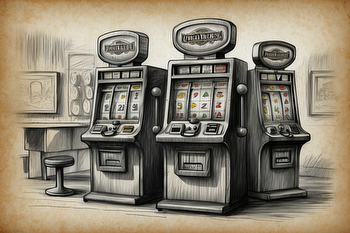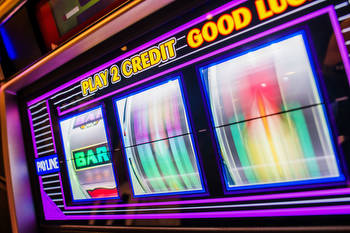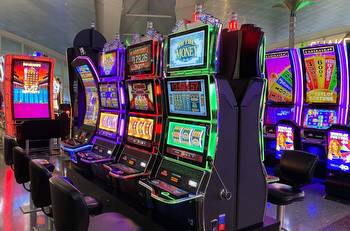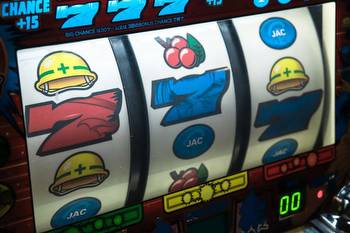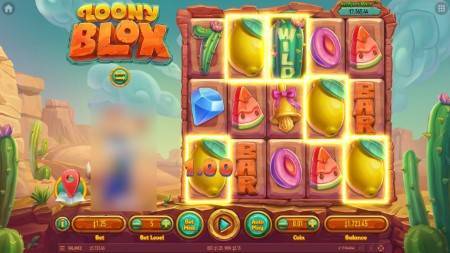Slot Variance and Volatility Explained

Slot variance and slot volatility are important parts of every slot game, and they can tell you a lot about how games work.
Tying together with other elements like Return to Player (RTP), variance and volatility form the basis of payouts and the results that players can expect. While luck will always play a big part, understanding these aspects of slot games is a must for any slot player.
On this page, we want to explore what slot variance and volatility are, how they affect the gameplay experience, and how they tie together with other slot game systems. This knowledge can be used to help guide you to the perfect slot games to fit your play style, or just make you more confident in how slot games work.
What is Slot Variance and Volatility?
Before looking at individual definitions, it’s worth noting that the terms variance and volatility are often used as synonyms in slot gaming.
While these terms aren’t 100% identical, you might see them used in the same way a lot, so keep that in mind. Both of these elements tie in with the concept of return to player, also called RTP, which we’ll also explain below.
Variance
Variance specifically refers to the expected deviation of payouts that a player will see while paying slots, usually calculated over a longer period. Slots are usually regarded as high, medium, or low variance.
Volatility
Volatility refers more to how often a player will win and how large wins will be, usually calculated over a shorter period. Slots exist within the range of high, medium, or low volatility.
Averaging out these ideas means that variance can be seen as a type of long-term application of volatility.
RTP
The Return to Player (RTP) in slots is a percentage value of how much money a player can expect to see returned from their bets over the long term. This is calculated as a percentage, with RTP usually lying in the 90%-96% range.
For an example of what RTP looks like in action, consider a player engaging with two different slot games, betting $100 on each machine. The first machine has an RTP of 90%, and the second machine has an RTP of 96%. After the player has completed their play, the amount of money returned to the first machine is likely to be around $90. The return from the second machine is likely to be around $96.
Of course, luck remains the most important factor of all. A machine can hit the jackpot and return enormous winnings, while it’s also possible for players not to have the best luck, in which case less than the expected RTP will be rewarded.
Despite both RTP and volatility/variance being tied to payouts, there isn’t a strong direct causal relationship between RTP and the other concepts. A low RTP slot can have high or low volatility, and a high RTP slot can have high or low volatility, the difference is found in the average payouts.
For example, consider the difference between a slot with an RTP of 90% and a slot with an RTP of 97%. If both were low volatility, they would both pay out often, but the lower RTP slot would pay smaller amounts on average.
On the other hand, if both were higher volatility, they would both pay out less often, but when they did the higher RTP slot would average slightly higher returns.
Charting the Difference
Now you understand the basics, we can take a little more of an in-depth look at how volatility and variance break down in terms of player returns.
To elaborate further, let’s explore each situation in terms of volatility and variance, and see what players can expect within context.
Low Variance
When playing a low variance slot, the expectation is that the player will experience a high number of wins over a long period of play. Payouts for these wins will tend to be on the smaller end, but because of the high winning frequency, the player’s bank will be more consistent.
Low-variance slots are perfect for players who want to enjoy low-risk slots over a longer period.
Medium Variance
Medium variance slots operate in the middle of the road in all three categories of risk, return, and frequency of wins over the long term. Players in medium-variance slots do place themselves at more risk than low-variance slot players, but with this risk comes the potential for larger individual wins.
High Variance
High variance slots exist for players who don’t mind a little risk. Long-term wins in high-variance slots are rarer than other levels of variance, but each win will tend to offer higher rewards. The risks of winning fewer spins are also high in higher variance slots.
Low Volatility
Looking at the above slot machine volatility chart, we can see that low-volatility slots are the most likely to offer a high frequency of wins in the short term. This involves less risk to the player’s bank and will return smaller individual wins. These slots are perfect for players who want to take their bank further, so they can be great games to combine with deposit match bonuses.
Medium Volatility
Medium volatility slots offer a balance between risks, individual win amount, and short-term win frequency. In games like Buffalo, slot machine volatility means players can experience a comfortable middle ground without higher risk, while also not dealings with as low individual rewards.
High Volatility
High volatility slots don’t pay out very often, which makes them a risk proposition for players only out for a few rounds. When they do pay out, high volatility slots will tend to reward with the largest prizes. For players who like to sit on the edge of their seats, these can be the perfect slots.
Individual Slot Machine Volatility Calculation
Within the slot game industry, volatility (and the variance they create over the long term), is quantified by what is called the slot machine volatility index. Instead of being regarded as low/medium/high, this index comes in the form of a number. This number more accurately represents the volatility and variance a slot will offer, since it’s given an operation definition instead of being reduced to shorthand.
The slot machine volatility index is calculated by a formula, with results usually landing something in the range of 0-20. A slot machine with a volatility index of 2 would be considered low volatility. On the other hand, a slot machine with a volatility index of 17 would be placed in the high volatility group.
The exact slot volatility index formula is quite complicated and requires input from a huge number of slot machine test runs. Once a large sample of tests is run through the index formula, they return the exact volatility index. This number is then used as a basis to relay to players a general idea of where a slot lies on the low/medium/high scale.
How to Determine Slot Volatility
It’s natural to want to figure out how to determine the volatility of a slot machine yourself, but this isn’t really possible.
The data used for these calculations requires a significant amount of testing (with millions of simulated spins), and game developers keep this information close to their chests. This means that it’s impossible for the player to determine the exact volatility index of slot games unless the developer chooses to let their audience know.
That said, most major casino websites and slot game review sites will include low/medium/high ratings within a slot machine volatility list. Sometimes volatility will be listed as soon as you click on a game, sometimes it will be found within a game’s help system, and sometimes it can be found through a listing on a developer’s website.
These lists will often separate the volatility scale beyond low/medium/high too, where something like low-medium volatility slow will provide you with a better understanding of what to expect. With all this in mind, let’s break down which levels should appeal to which players, and which famous games illustrate standout examples of each.
Which Slot Variance/Volatility Level is Right for You?
The right level of volatility and variance for each player depends on how long you want to play for, and how long you’re okay with playing without wins.
Low volatility slots will provide a constant influx of smaller wins, which will be perfect for some players. Other players might prefer less frequent but larger payouts, in which case higher volatility slots would be better choices.
Like with individual slot game themes, the best fit for you is a very personal question. Whether looking for the extreme end of the volatility spectrum or anything in between, there are no wrong answers, it’s all about what you’re most comfortable with. If you’re not yet sure which is right for you, then be sure to check out the demo versions of games first to see which feels the best to play.
Popular Games for Each Volatility Level
Every level of slot volatility/variance has its famous name. These are the titles that have stood up to scrutiny for both new players and veterans, where everyone can find something to enjoy. With that in mind, here are a few of our picks for slots at different volatility/variance levels worth of slot fan attention.
Low Volatility/Variance Games
Jack Hammer/Jack Hammer 2
Borrowing heavily from the old detective comic Dick Tracy, the Jack Hammer games are low-volatility games which an enormous emphasis on style.
Played over three reels, these titles have players facing down bad guys, saving damsels, and putting on their best hard-boiled accent while hopefully, nobody overhears. Fighting crab-handed pinstripe-wearing gangsters never felt so good, even though the concept is an odd one to think about.
Starburst
Veteran slot players will need no introduction to this one, as Starburst is widely considered one of the most famous slot games of all time. Released back in 2012, Starburst as a game and a series has seen constant updates as players enjoy its clean, classic, and cosmic appearance.
Played over five reels, Starburst is a simple title with low volatility, but that doesn’t in any way detract from its brilliant appeal.
Blood Suckers
Fans of horror, vampires, and slots have the opportunity to fuse their loves in this 5-reel low volatility/variance game. Taking inspiration from popular vampiric monsters like Nosferatu, Vlad Tepes, and the Bride of Dracula, Blood Suckers won’t suck your wallet, but it might make your heart race. A classic game which spawned a classic sequel, Blood Suckers is a favourite of many long-time slots fans.
Medium Volatility/Variance Games
Gordon Ramsay Hell’s Kitchen
In what is perhaps the most surprising placement on this list given the eponymous host’s famous outbursts, Gordon Ramsay Hell’s Kitchen is a medium volatility slot from a highly volatile personality. Hell’s Kitchen is played across five reels as players match a range of dishes and utensils from Gordon’s many restaurants. From burgers to deserts, this game might leave you hungry, but at least it won’t yell at you.
Jack in a Pot
Leveraging everything it can from Irish folklore is Jack in a Pot, a lush green slot where players aim to find their own pot of gold at the end of the rainbow. Jack in a Pot is played over seven reels, offering more symbols at once than what most titles manage. A jaunty game with a jauntier protagonist, this medium volatility/variance game is a great fit for any fan of the Emerald Isle’s rich mythology.
Rich Wilde and the Book of Dead
As one of the most famous adventurers to brace the slot game world, Rich Wilde really gets around. This medium volatility/variance slot has him investigating/raiding Egypt as what we can only hope is a mission to protect artefacts instead of selling them for profit. Regardless of the character’s intent, this five-reel slot is an amazing demonstration of a popular theme well worth checking out.
High Volatility/Variance Games
Dead or Alive 2
Grab yer six-shooter partner and head out into the Old West with Dead or Alive 2, one of the most famous slots takes on cowboys and outlaws. Played over five reels, this high volatility/variance title has players facing down criminals with a revolver in one hand and a shot of whiskey in another. Just like the untamed West, the risks can be higher, but the rewards for those daring enough can be worth it.
Rome: The Golden Age
Another example of a game that understands the implications of high risk with the potential for high rewards comes Rome: The Golden Age. This five-reel slot places players at the height of one of humanity’s most famous civilisations during the time of gladiatorial combat. Thankfully this title won’t pit you in actual battles, but it does capture some of the excitement that makes ancient Rome so fascinating so many centuries later.
Twin Spin Megaways
As a fantastic-looking high volatility/variance slot, Twin Spin Megaways offers seven reels filled with classic casino slot symbols. Match bells and cherries over more than a hundred thousand paylines in a game that combined the old and new in a fantastic experience over mobile and desktop play.
Can the Player Affect Volatility or Variance?
Not usually. Slot games are designed to be highly reliable, which means having variance and volatility which change doesn’t fit well with the creator’s philosophy. There are some slot games which allow the player to modify the general gameplay systems through the use of bonus systems, however, and this ability can sometimes affect volatility or variance.
These slots are categorised as adjustable volatility slots, and they illustrate one of the more uncommon sides of the online slot arena. Adjusting volatility and variance in a game is usually achieved through a large obvious button on the main screen which changes between a classic game mode and a modified and higher volatility game mode.
Changing modes can have different effects such as adding or removing symbols, changing on which reels symbols can appear, and extending the ability of symbols like wilds.
Outside of these highly visible and labelled options, slot machines will continue to run on chance, so there’s no way to affect volatility or variance through tricks or special tactics.
FAQs
What are variance slots?
Technically every slot is a variance slot. Variance in slot games refers to what a player can expect from the frequency of wins and the size of individual wins over a long period. These can range from low variance to high variance.
What is slot volatility?
Slot volatility refers to how frequent slot wins will be in the short term and the size of individual wins that the player can expect. Slot volatility will range between low and high depending on the game.
Can slot volatility be changed?
Some slots do offer the ability to change volatility, usually with a big and obvious special feature button that can be toggled. Otherwise, special abilities and bonus games can temporarily change volatility from the base game, but this is usually factored into overall game volatility calculations.
Is high or slot volatility better?
It depends on the taste of the player. There isn’t really a better or worse option, it’s up to the player whether they prefer constant smaller wins (low volatility) or less frequent larger wins (high volatility).








